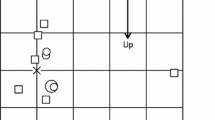Abstract
A field experiment was established in the autumn of 1992 in order to study predation of acorns, germination and early growth of oak seedlings. The experiment was established on a clearcut and an adjacent oak shelterwood in southern Sweden. In the experiment, a total of 6 840 acorns were sown. The sowing was carried out with different vegetation control and soil preparation treatments and with different planting depths.
The germination percentage was highest for acorns sown at five cm depth and lowest for acorns sown on top of the soil, and lower for acorns sown in areas where the humus layer had been removed than in areas where the humus layer was retained. There was no difference in the percentage germination after two growing seasons between acorns sown inside the shelterwood and acorns sown on the clearcut. The height of the seedlings was lowest when the humus was removed while the number of leaves per seedling was lowest for seedlings in untreated areas after two growing seasons. Furthermore, seedlings in untreated areas showed the lowest relative height growth rate during the second growing season. In spite of higher biomass of ground vegetation in undisturbed areas compared to treated areas, no effect of the soil and vegetation control treatments could be found on soil water potentials. The soil temperature and photosynthetic active radiation at seedling level were higher in areas where soil preparation and vegetation control had been performed. However, it was concluded that neither low soil water availability nor low light levels could be the only cause of lower relative height growth rate during the second growing season for seedlings in undisturbed areas.
Similar content being viewed by others
References
Bartlett, M. S. 1937. Some examples of statistical methods of research in agriculture and applied biology. J. Roy. Statist. Soc. Suppl. 4: 137–170.
Casall, J. J. and Smith, H. 1989. The function, action and adaptive significance of phytochrome in light-grown plants. Plant. Cell Environment 12: 855–862.
Cogliastro, A., Gagnon, D., Coderre, D. and Bhéreur, P. 1990. Response of seven hardwood tree species to herbicide, rototilling, and legume cover at two southern Quebec plantation sites. Can. J. For. Res. 20: 1172–1182.
Davies, R. J. 1987. Trees and weeds. Forestry Commission Handbook 2: 1–36.
Gemmel, P. Nilsson, U. and Welander, T. 1996. Development of oak and beech seedlings planted under varying shelterwood densities and with different site preparation methods. New. For. (manuscript in press).
Hägglund, B. and Lundmark, J-E. 1977. Site index estimation by means of site properties. Scots pine and Norway spruce in Sweden. Stud. For. Suec. 138: 1–33.
Hannerz, M. and Hånell, B. 1993. Changes in the vascular plant vegetation after different cutting density on a productive peatland site in central Sweden. Scand. J. For. Res. 8: 193–203.
Harmer, R. 1994a. Natural regeneration of broadleaved trees in Britain: I Historical aspects. Forestry 67: 179–188.
Harmer, R. 1994b. Natural regeneration of broadleaved trees in Britain: II Seed production and predation. Forestry 67: 275–286.
Jarvis, P. G. 1964. Interference by Deschampsia flexuosa (L.) Trin. Oikos 15: 56–78.
Jones, E. W. 1959. Biological flora of the British Isles: Quercus L. J. Ecol. 48: 549–555.
Korstian, C. F. 1927. Factors controlling germination and early survival in oaks. New Haven: Yale University. School of Forestry, Bulletin 19, pp 115.
Lawrie, J. and Clay, D. V. 1994. Tolerance of 2-year-old forestry trees to five herbicides. Forestry 67: 287–295.
Löf, M. and Nilsson, U. 1995. Effects of herbicides and different scarification methods on initial growth and water stress of sowed oak (Quercus robur). Second International Conference on Forest Vegetation Management, March 1995 (Proceeding).
Longman, K. A. and Coutts, M. P. 1974. Physiology of the oak tree. In: Morris, M. G. and Perring, F. H. (Eds) The British Oak: Its History and Natural History. Botanical Society of the British Isles Conference Report No 14. Classey, Farringdon, Berks. 195–221.
Morgan, D. C., Rook, D. A. Warrington, I. J. and Turnbull, H. L. 1983. Growth development of Pinus radiata D. Don.: the effect of light quality. Plant. Cell. Environment 6: 691–701.
Örlander, G. 1993. Shading reduces both visible and invisible frost damage to Norway spruce seedlings in the field. Forestry 66: 27–36.
Örlander, G. and Gemmel, P. 1990. Site preparation. A Swedish overview. FRDA Report 105: pp 62.
Ottosson-Löfvenius, M. 1991. Temperature and radiation regimes in pine shelterwood and clear-cut area. Department of Forest Ecology, Swedish University of Agricultural Sciences, Umeå. 109 pp.
Russell, R. S. 1977. Plant Root Systems: Their function and interaction with the soil. McGraw-Hill Book Company. London. pp 290.
SAS Institute Inc. 1988. SAS/STAT™ user's guide. Release 6.03 edition. SAS Institute Inc., Cary, NC.
Shaw, M. W. 1968. Factors affecting the natural regeneration of Sessile oak (Quercus petraea) in north Wales. J. Ecol. 56: 647–660.
Watt, A. S. 1919. On the cause of failure of natural regeneration in British oak woods. J. Ecol. 17: 173–203.
Zar, J. H. 1984. Biostatistical analysis. Prentice Hall, Englewood Cliffs, N.J. 1–718.
Author information
Authors and Affiliations
Rights and permissions
About this article
Cite this article
Nilsson, U., Gemmel, P., Löf, M. et al. Germination and early growth of sown Quercus robur L. in relation to soil preparation, sowing depths and prevention against predation. New Forest 12, 69–86 (1996). https://doi.org/10.1007/BF00029983
Received:
Accepted:
Issue Date:
DOI: https://doi.org/10.1007/BF00029983




